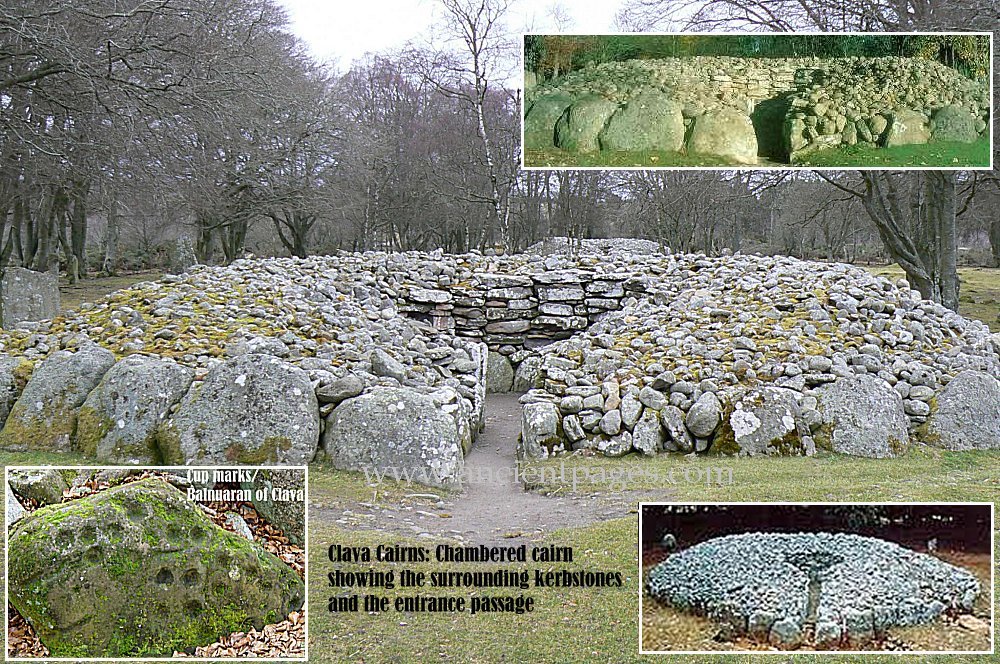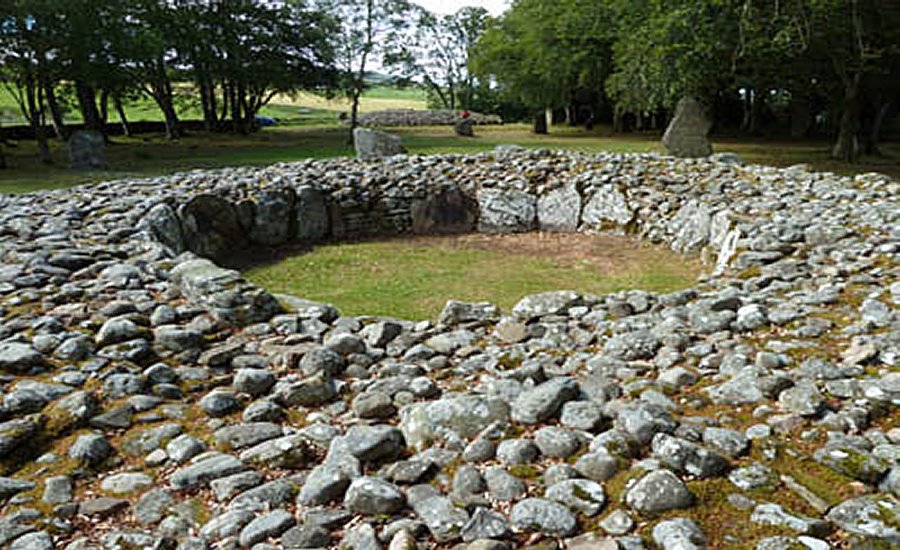4,000-Year-Old Scottish Clava Cairns Were Built To House Dead
A. Sutherland - AncientPages.com - The Clava Cairns are located near Inverness, a city in the Scottish Highlands. According to no published excavations, the dates for the Clava monuments are thought to belong to the Late Neolithic or Early Bronze Age (about 2500 - 1700 BC).
As explained in the book "How to read prehistoric monuments" by Alan Butler, "the Scottish examples, especially the ones around Inverness, are often called ‘Clava Cairns’, though in fact this name refers to three specific cairn burials at Balnuaran of Clava, Inverness.
Balnuaran of Clava contains (three tombs), Inverness, Scotland and they were first used around
2000 BC and then again in 1000 BC.
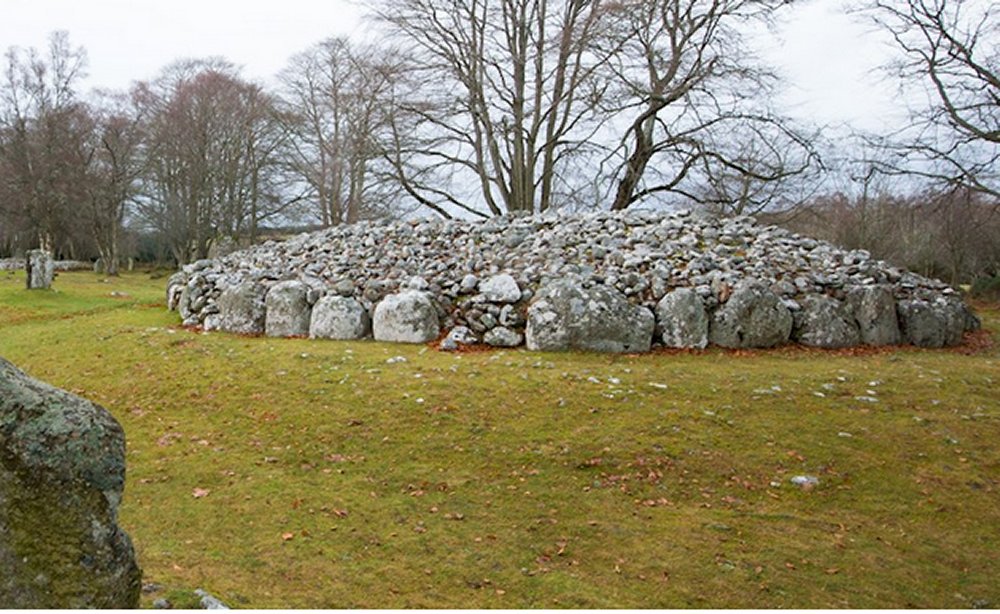
For millennia, this cemetery (and also a smaller one in the vicinity, at Milton of Clava) remained sacred places for the Bronze Age peoples, who conducted there their burial activities and rituals.
There are two different types of cairn tombs in Scotland. One variety is a corbelled passage grave (Corbelled Tomb) and Passage Grave with a single chamber and a short entrance passage.
The passage usually faces southwest (towards midwinter sunset). The other type of cairn tomb had noapparent entrance and no specifically created roof to the chamber. It is, essentially a ring of stones.Cairn tombs are invariably surrounded by a series of standing stones, and a kerb of stones often also surrounds the cairn..."
See also:
Largest Collection Of Ancient “Cup-Marked” Rocks Ever Found In Scotland
Brochs: Ingeniously Engineered Windowless Iron Age Structures Of North And West Scotland
Incredible 5,000-Year-Old Temple Complex In Orkney Could Re-Write History Of Scotland
For millennia, this cemetery (and also a smaller one in the vicinity, at Milton of Clava) remained sacred places for the Bronze Age peoples, who conducted there their burial activities and rituals.
The belief in an existence of an afterlife was widespread and deeply respected by the Bronze Age societies and was expressed by their funerary practices and additionally by ceremonial monuments which were constructed in Bronze Age Scotland.
These range from cairns built for the disposal of the dead to stone rows, stone circles and various different types of ‘hengiform’ monument (a very small henge-like structure, typically less than 15?m across). In many cases, these occurred in monument complexes that are likely to have spanned the third and second millennia BC.
At around 2000 BC a row of large cairns was built, three of which can still be seen today.
Excavations have found evidence for farming on the site before any of these monuments were built. Many of the stones used to construct the cairns have cup marks on them – these may have been reused from another place, perhaps an earlier sacred site.
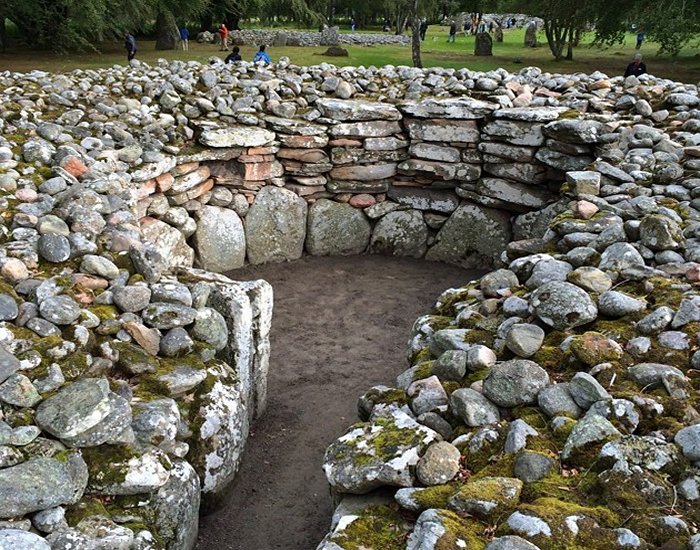
Ancient Clava Cairns were built nearly 4,000 years ago in the Scottish Highlands near Inverness. Burials here were likely but much mystery remains. Guilded fountains with a castle towering above on a volcanic crag are part of what sets Edinburgh apart. Shot on assignment in Scotland aboard The Lord of the Glens with National Geographic Expeditions. @JimRichardsonNG @NatGeoTravel @NatGeo #scotland #iphonephoto (source)
Each cairn is surrounded by a circle of standing stones. The three prominent cairns form a line running north-east to south-west and also the passages of the two cairns are aligned towards the south-west, suggesting that the builders focused on eyes on the midwinter sunset.
Likewise, the location of the standing stones, especially the tallest ones is related to the setting sun in the south-west.
According to an ancient tradition, only one or two people were usually buried in each cairn, which could indicate that these resting places were used for particularly important persons in this Bronze Age society.
From the limited evidence available, it seems that the Clava cairns were not typical burial places
for communities, but for selected individuals, both male and female, which indicates that identity of these important personalities in the society was also celebrated in death.
These individuals were memorialized by the erection of the Clava cairns but also stone circles and small henges.
Written by – A. Sutherland - AncientPages.com Senior Staff Writer
Copyright © AncientPages.com All rights reserved. This material may not be published, broadcast, rewritten or redistributed in whole or part without the express written permission of AncientPages.com
Expand for referencesMore From Ancient Pages
-
 Missing ‘Delmenhorst’: 17th Century Danish Warship From ‘Battle Of Fehmarn’ Found
Archaeology | Sep 22, 2020
Missing ‘Delmenhorst’: 17th Century Danish Warship From ‘Battle Of Fehmarn’ Found
Archaeology | Sep 22, 2020 -
 Stunning 2,400-Year-Old Mask Of God Dionysus Unearthed In Ancient City Of Daskyleion
Archaeology | Sep 7, 2020
Stunning 2,400-Year-Old Mask Of God Dionysus Unearthed In Ancient City Of Daskyleion
Archaeology | Sep 7, 2020 -
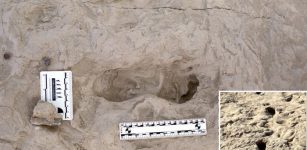 1.5-Million-Year-Old Footprints Of Two Different Species Of Human Ancestors Found At The Same Spot
Human Beginnings | Nov 29, 2024
1.5-Million-Year-Old Footprints Of Two Different Species Of Human Ancestors Found At The Same Spot
Human Beginnings | Nov 29, 2024 -
 Ancient Mystery Of The Unknown White Bearded Rulers
Civilizations | Apr 21, 2020
Ancient Mystery Of The Unknown White Bearded Rulers
Civilizations | Apr 21, 2020 -
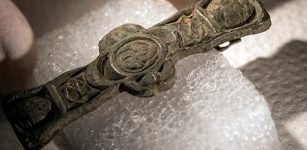 Medieval Irish Book Fitting Among Historical Finds Unearthed In Old Cemetery In Norway
Archaeology | Dec 15, 2017
Medieval Irish Book Fitting Among Historical Finds Unearthed In Old Cemetery In Norway
Archaeology | Dec 15, 2017 -
 Mysterious Books With Dangerous Secret Knowledge Deliberately Hidden From Public View
Featured Stories | Jan 8, 2024
Mysterious Books With Dangerous Secret Knowledge Deliberately Hidden From Public View
Featured Stories | Jan 8, 2024 -
 Scientists Say Dinosaurs Could Be The Reason Humans Can’t Live For 200 Years
Featured Stories | Jan 8, 2024
Scientists Say Dinosaurs Could Be The Reason Humans Can’t Live For 200 Years
Featured Stories | Jan 8, 2024 -
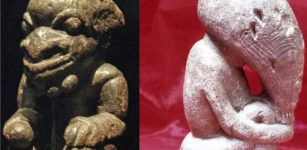 Monstrous Nomoli Figures Left By Unknown Culture That Vanished Long Ago
Artifacts | Mar 13, 2023
Monstrous Nomoli Figures Left By Unknown Culture That Vanished Long Ago
Artifacts | Mar 13, 2023 -
 Largest Figurine Workshop Yet Discovered In The Maya World
Archaeology | Apr 30, 2019
Largest Figurine Workshop Yet Discovered In The Maya World
Archaeology | Apr 30, 2019 -
 Neanderthals And Other Ancient Humans Were Much More Intimate Than Previously Thought – DNA Shows
DNA | Jul 12, 2024
Neanderthals And Other Ancient Humans Were Much More Intimate Than Previously Thought – DNA Shows
DNA | Jul 12, 2024 -
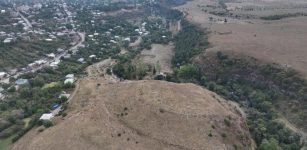 Why Was The Dmanisis Gora Fortress Community So Resilient In The Transition From The Bronze To Iron Age
Archaeology | Jun 5, 2023
Why Was The Dmanisis Gora Fortress Community So Resilient In The Transition From The Bronze To Iron Age
Archaeology | Jun 5, 2023 -
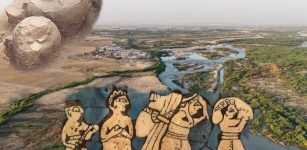 Artifacts From Shakhi Kora Reveal The Rejection Of Early Centralized Governance In Ancient Mesopotamia
Archaeology | Dec 9, 2024
Artifacts From Shakhi Kora Reveal The Rejection Of Early Centralized Governance In Ancient Mesopotamia
Archaeology | Dec 9, 2024 -
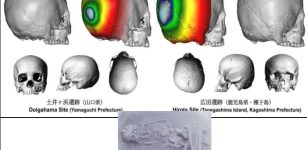 Japan’s Ancient Practice Of Cranial Modification: The Case Of The Hirota People In Tanegashima
Archaeology | Aug 18, 2023
Japan’s Ancient Practice Of Cranial Modification: The Case Of The Hirota People In Tanegashima
Archaeology | Aug 18, 2023 -
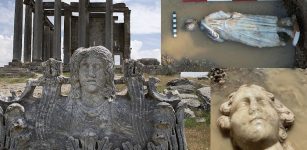 More Greek Gods’ Heads And A Life-Sized Statue Of A Man Unearthed In The Ancient City Of Aizanoi
Archaeology | Dec 28, 2022
More Greek Gods’ Heads And A Life-Sized Statue Of A Man Unearthed In The Ancient City Of Aizanoi
Archaeology | Dec 28, 2022 -
 Historic Graffiti Made By Soldiers Sheds Light On Africa’s Maritime Heritage – New Study
Archaeology | May 6, 2022
Historic Graffiti Made By Soldiers Sheds Light On Africa’s Maritime Heritage – New Study
Archaeology | May 6, 2022 -
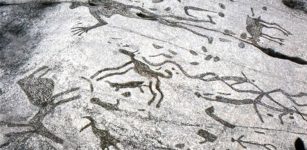 Peterborough Petroglyphs Could Offer Evidence Ancient Celts Visited Canada 2,000 Years Ago
Archaeology | May 27, 2015
Peterborough Petroglyphs Could Offer Evidence Ancient Celts Visited Canada 2,000 Years Ago
Archaeology | May 27, 2015 -
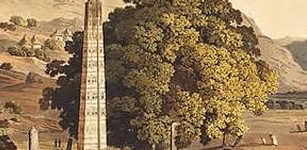 Ancient African Empires’ Impact On Migration Revealed By Genetics
Archaeology | Mar 31, 2023
Ancient African Empires’ Impact On Migration Revealed By Genetics
Archaeology | Mar 31, 2023 -
 Mysterious Mythical Tree Connected To Strange Islands Found By Ancient Explorers
Featured Stories | Apr 13, 2024
Mysterious Mythical Tree Connected To Strange Islands Found By Ancient Explorers
Featured Stories | Apr 13, 2024 -
 Impressive And Rare Hoard Of Silver Coins Dated To The Hasmonean Period (126 BC) – Studied
Archaeology | Oct 14, 2021
Impressive And Rare Hoard Of Silver Coins Dated To The Hasmonean Period (126 BC) – Studied
Archaeology | Oct 14, 2021 -
 ‘Bad King John’ Of England: His Lost Treasures Have Never Been Found
Featured Stories | Apr 6, 2016
‘Bad King John’ Of England: His Lost Treasures Have Never Been Found
Featured Stories | Apr 6, 2016

